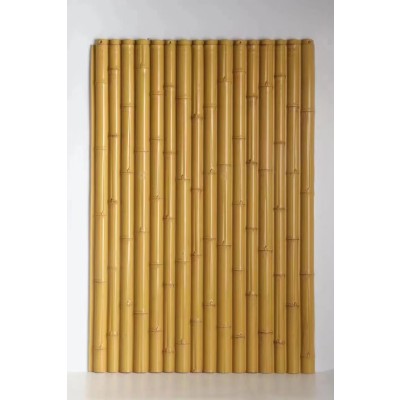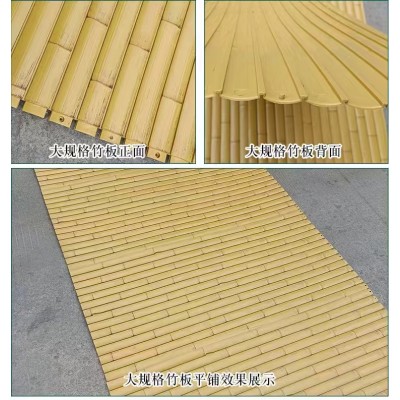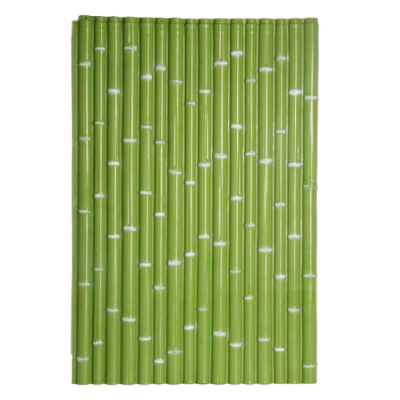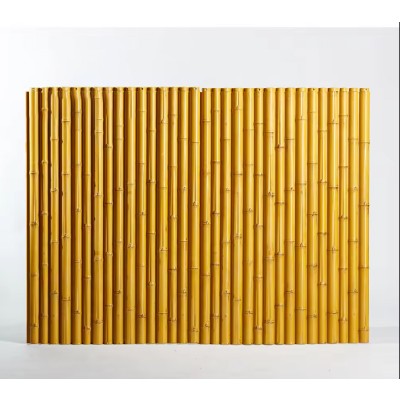Study on the design of synthetic bamboo wall for indoor and outdoor space in Vietnam
Study on the design of synthetic bamboo wall for indoor and outdoor space in Vietnam
Abstract: This paper focuses on the design of synthetic bamboo walls for indoor and outdoor Spaces in Vietnam, and deeply discusses the characteristics, application advantages, design points, challenges and future development trends of synthetic bamboo walls in indoor and outdoor Spaces in Vietnam. Through the research, the aim is to provide new ideas and references on the application of synthetic bamboo wall for architectural space design in Vietnam and even the world, and promote the development of green, sustainable and regional characteristics of architectural design.
Key words: Vietnam; Indoor and outdoor space; Synthetic bamboo wall; Design research
I. Introduction to the design of synthetic bamboo walls for indoor and outdoor Spaces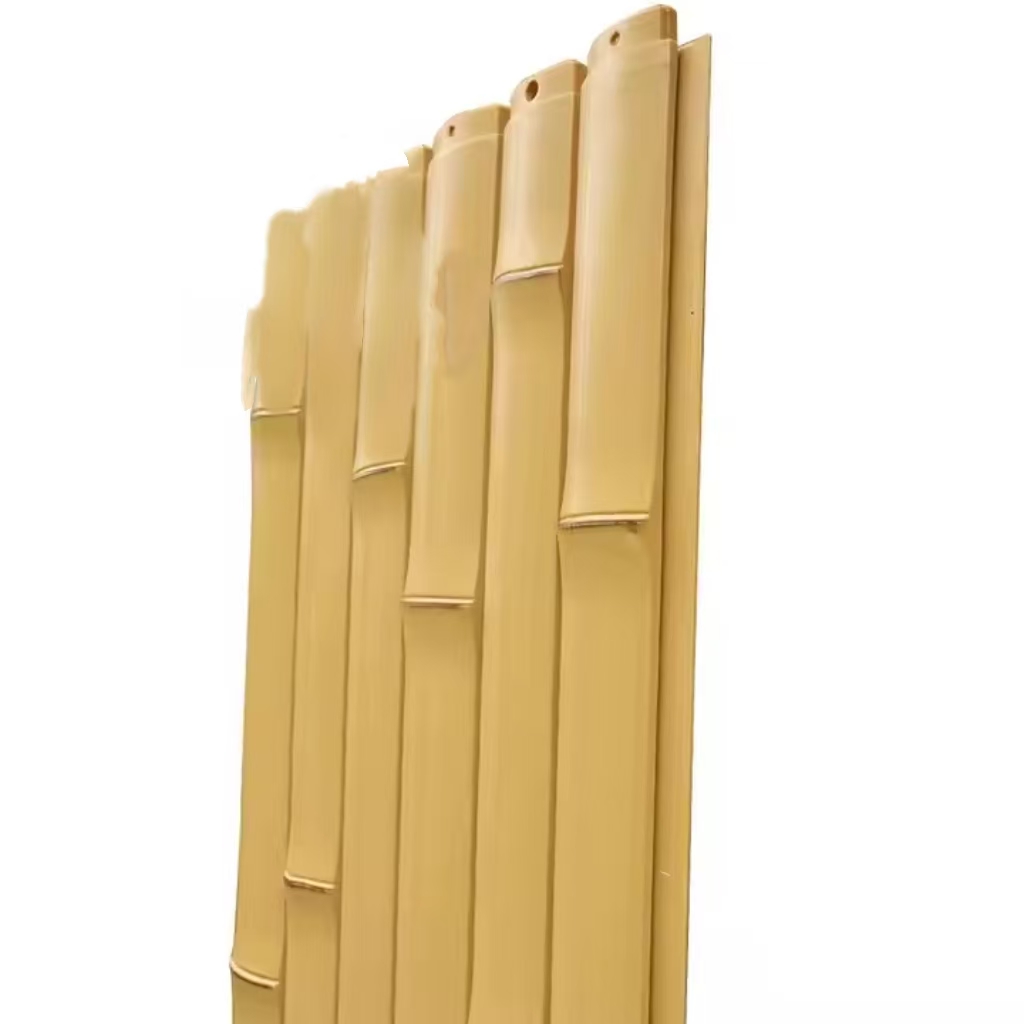
With the increasing attention to the quality of architectural space and environmental sustainability, new building materials and design techniques have been widely explored and applied in the field of architecture. As a kind of building material with both environmental protection characteristics and unique aesthetic value, synthetic bamboo is gradually emerging in indoor and outdoor space design in Vietnam. Vietnam has a rich bamboo culture, and traditional bamboo architecture plays an important role in the architectural history of Vietnam. However, the diversity of modern architectural needs has prompted the emergence of synthetic bamboo materials, which not only inherits some of the advantages of natural bamboo, but also has many improvements in performance, bringing new opportunities for indoor and outdoor space design innovation in Vietnam.
Second, the characteristics of synthetic bamboo wall materials
(1) Physical properties of synthetic bamboo wall
Strength and durability: Synthetic bamboo walls usually use a special process to combine bamboo fiber with other polymer materials, compared with natural bamboo, its strength has been significantly improved. It can withstand greater external force and is not easy to crack, deformation and other problems, thus ensuring the stability and durability of the building structure. Under the climatic conditions of Vietnam, whether it is the hot and rainy southern region or the relatively mild climate in the northern region, the synthetic bamboo wall can better adapt to the environment and maintain the stability of its physical properties.
Weight and plasticity: The synthetic bamboo material maintains a relatively light weight, which makes it easier to transport and install during the construction process. At the same time, it has good plasticity and can be processed into various shapes and sizes according to design needs, providing designers with a broad creative space. Whether it is a curviline-shaped art wall or a regular partition wall, synthetic bamboo materials can meet the design requirements.
(2) Environmental performance of synthetic bamboo wall design
Renewable and degradable: One of the main raw materials of synthetic bamboo materials is bamboo fiber, bamboo as a fast-growing renewable resources, its growth cycle is short, can be replenished in a short time. Moreover, when the synthetic bamboo wall reaches the service life, some materials can achieve natural degradation, less pollution to the environment, in line with the sustainable development of the building concept.
Low energy consumption and low emissions: In the production process of synthetic bamboo materials, compared with some traditional building materials, such as steel, cement, etc., its production energy consumption is lower. And the emissions of pollutants generated in the production process are also relatively small, helping to reduce the negative impact of the construction industry on the environment.
(3) Aesthetic characteristics of synthetic bamboo wall
Natural texture: Although it is a synthetic material, the synthetic bamboo wall still retains the natural texture and texture of natural bamboo, giving people the feeling of being close to nature. Its unique bamboo pattern can add a rustic and warm atmosphere to the indoor and outdoor Spaces, so that the building and the natural environment better integration.
Color diversity: Through special dyeing and processing processes, synthetic bamboo walls can present a variety of colors, from traditional bamboo yellow to dark brown, to meet the needs of different design styles and user preferences. This variety of colors provides more options for the overall color scheme of indoor and outdoor Spaces.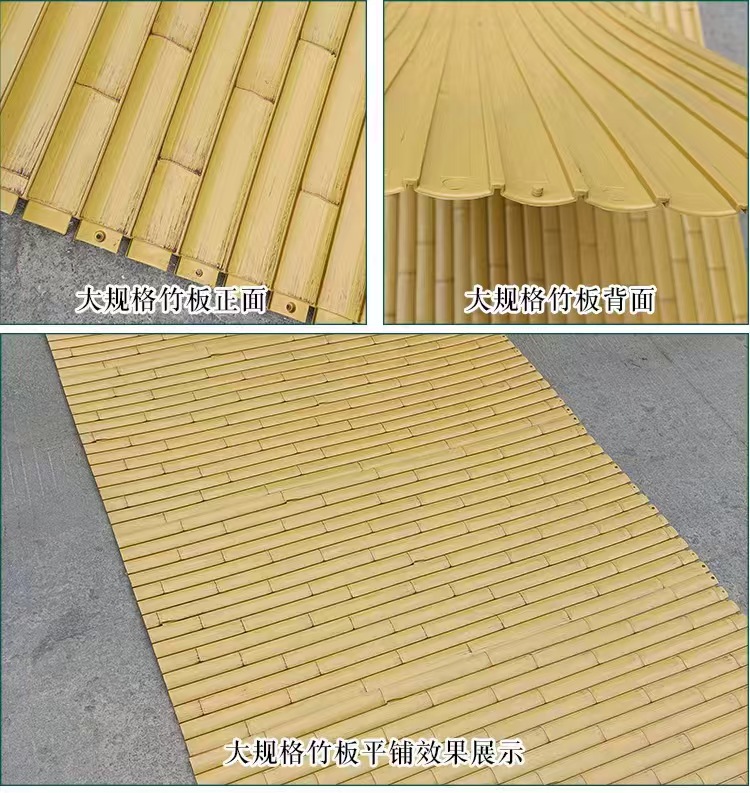
Third, the application advantages of synthetic bamboo walls in indoor and outdoor Spaces in Vietnam
(1) Continuation of regional cultural characteristics
Bamboo culture in Vietnam has a long history, and bamboo is widely used in traditional architecture. The use of synthetic bamboo walls continues the regional cultural characteristics of Vietnam to a certain extent, combining tradition with modernity. In the architectural transformation of some blocks or traditional villages with historical and cultural value, synthetic bamboo walls not only meet the needs of modern architectural functions, but also retain the local cultural memory, making the buildings radiate new vitality in the new era.
(2) Adapt to climatic conditions in Vietnam
Shade and ventilation: Vietnam's climate is hot and humid, and good shade and ventilation are crucial in architectural design. The synthetic bamboo wall can effectively block the direct sunlight and reduce the indoor heat absorption through reasonable design, such as the use of hollow, grille and other forms. At the same time, these designs also promote air circulation, improve the ventilation conditions of indoor and outdoor Spaces, and keep the interior cool and comfortable.
Moisture-proof and anti-corrosion: The synthetic bamboo material has been specially treated and has better moisture-proof and anti-corrosion properties. This feature enables it to effectively avoid material damage and deformation caused by humidity in Vietnam's humid climate environment, extending the service life of the building. Compared with natural bamboo, synthetic bamboo wall has obvious advantages in moisture-proof and anti-corrosion, and reduces the maintenance cost in the later period.
(3) Create a diversified space atmosphere
Interior space: In the interior space, the synthetic bamboo wall can be used as partition, background wall and other elements. Its warm texture and natural texture can create a warm and comfortable living or working environment. For example, in public Spaces such as hotel lobbies and restaurants, the use of synthetic bamboo walls as decoration can bring unique visual experience and comfortable atmosphere to customers. In the residential space, the synthetic bamboo wall can divide different functional areas, while increasing the sense of hierarchy and interest of the space.
Outdoor space: In the outdoor space, synthetic bamboo walls can be used for building facades, yard fences, etc. Its unique appearance allows the building to stand out from its surroundings while at the same time harmonizing with the natural environment. In some resort hotels or ecological buildings, the application of synthetic bamboo walls creates a peaceful and natural atmosphere, providing a space for users to relax.
Four, the main points of the design of indoor and outdoor space of synthetic bamboo wall in Vietnam
(1) Integration with the overall architectural style
Traditional style architecture: In the traditional style architecture of Vietnam, such as the Vietnamese traditional residence "tall house", the design of synthetic bamboo walls should follow the form and proportion of traditional architecture. Retain the use of bamboo materials and decorative details in traditional architecture, such as bamboo weaving patterns, bamboo knot shapes, etc., so that the synthetic bamboo wall can complement the traditional architectural style. At the same time, it can be combined with modern construction technology to optimize the structure and performance of the synthetic bamboo wall, so that it can better adapt to the needs of modern life.
Modern style architecture: For modern style architecture, synthetic bamboo walls can be used as a unique architectural element, combined with modern building materials such as glass and metal. Through contrast and coordination, a modern and innovative architectural look is created. For example, in some modern office buildings, the use of large-area glass curtain walls with local synthetic bamboo wall decoration can not only reflect the modern sense of science and technology of the building, but also introduce natural elements to increase the affinity of the building.
(2) Grasp of spatial scale and proportion
Indoor space: When using the synthetic bamboo wall in the indoor space, the scale and proportion of the space should be fully considered. If the space is small, the use of too thick or large area of synthetic bamboo walls should be avoided, so as not to cause a sense of oppression of the space. Local embellishment or small partition can be used to make the synthetic bamboo wall a highlight in the space. For larger Spaces, synthetic bamboo walls can be used to divide different functional areas, and through reasonable layout and design, a sense of hierarchy and rhythm of space can be created.
Outdoor space: In the outdoor space, the scale parameters such as the height, length and thickness of the synthetic bamboo wall should be coordinated with the overall building and the surrounding environment. For example, the height and length of the synthetic bamboo wall, which is the facade of the building, should match the volume of the building to avoid the situation of disproportionality. At the same time, the spatial relationship between bamboo wall and surrounding plants, roads and other elements also needs to be carefully designed to create a harmonious and unified outdoor space environment.
(3) Functional requirements
Acoustic function: In some indoor Spaces with high acoustic requirements, such as conference rooms, recording studios, etc., synthetic bamboo walls can meet the acoustic function needs through special structural design. For example, the use of double or multi-layer structure of synthetic bamboo walls, filled with acoustic materials in the middle, can effectively absorb and block sound, improve the indoor acoustic environment quality.
Safety function: Whether it is an indoor or outdoor space, the design of the synthetic bamboo wall should ensure its safety. In the structural design, it is necessary to ensure that the bamboo wall can withstand normal use and possible external forces, such as wind and earthquake forces. At the same time, in the selection of materials and surface treatment, safety factors such as fire prevention and non-slip should be considered to ensure the safety of users' lives and property.
5. Challenges and future development trends of synthetic bamboo wall applications
1. Challenges we face
Lack of market awareness: Despite the many advantages of synthetic bamboo materials, their awareness is relatively low in the Vietnamese market at present. Many building designers and owners do not have a deep understanding of the properties and applications of synthetic bamboo materials, and still tend to choose traditional building materials. To some extent, this limits the wide application of synthetic bamboo walls in indoor and outdoor space design in Vietnam.
Cost problem: The production process of synthetic bamboo material is relatively complex, resulting in its relatively high cost. Compared with some traditional building materials, the price advantage of synthetic bamboo walls is not obvious, which makes it difficult for some projects with limited budgets to choose to use synthetic bamboo walls. In addition, due to the small size of the market, production costs are difficult to be effectively reduced through large-scale production.
Technical standards are not perfect: At present, the relevant technical standards and norms in the production and application of synthetic bamboo materials in Vietnam are not perfect. This makes the design, construction and quality inspection of synthetic bamboo wall lack of unified standards and basis, easy to appear quality problems, affecting the promotion and application of synthetic bamboo wall.
2. Future development trend
Technological innovation and cost reduction: With the continuous progress of science and technology, the production technology of synthetic bamboo materials will continue to innovate. Through the development of new production processes and raw material formulations, it is expected to further improve the performance of synthetic bamboo materials and reduce production costs. For example, the use of new composite material technology and automated production equipment to improve production efficiency and reduce labor costs, thus making synthetic bamboo walls more competitive in the market.
Design innovation and diversified applications: In the future, the design of synthetic bamboo walls will pay more attention to innovation and diversified applications. Designers will give full play to the characteristics of synthetic bamboo materials, combined with different architectural styles and functional needs, to create more novel and unique design works. In addition to the application of indoor and outdoor space in buildings, synthetic bamboo walls may also be more widely used in landscape design, urban furniture and other fields to expand its market space.
Standardization and standardization development: In order to promote the healthy development of synthetic bamboo walls, relevant departments and industry organizations in Vietnam will gradually improve the technical standards and specifications of synthetic bamboo materials. Establish unified production, design, construction and quality testing standards, strengthen the supervision of the quality of synthetic bamboo wall products, and improve market recognition and trust. At the same time, the development of standardization and standardization will also promote the scale and professional development of the synthetic bamboo material industry.
Vi. Conclusion
As a kind of building material with unique advantages, synthetic bamboo wall has a broad application prospect in indoor and outdoor space design in Vietnam. It can not only continue the regional cultural characteristics of Vietnam, adapt to the climatic conditions of Vietnam, but also create a diverse atmosphere for indoor and outdoor Spaces. However, at present, the synthetic bamboo wall in the process of application is still facing the challenges such as lack of market awareness, high cost and imperfect technical standards. Through technological innovation, design innovation and standardization and other measures, synthetic bamboo wall is expected to be more widely used and developed in the future. In the context of the global advocacy of green and sustainable building development, the application of synthetic bamboo walls meets the needs of the development of The Times, will inject new vitality into the field of architectural design in Vietnam, and promote the development of Vietnam's construction industry in a more environmentally friendly and innovative direction.
7, Vietnam indoor and outdoor space design JHYBAMBOO has other building materials such as:
